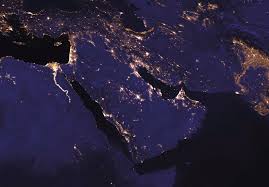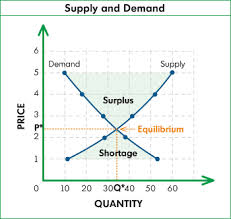America the Beautiful Ugly
Judging by my Facebook feed, we should not continue to celebrate Columbus Day. Judging by the sentiment at the 20th anniversary of the Nation of Islam’s Million Man March ominously entitled Justice or Else!, we should not be celebrating July 4th, or really America-as-founded in any significant way. Judging by the logic of the political left as was on display at the first 2016 Democrat Party presidential debate, America has never been America the Beautiful. It is and always has been America the Ugly – racist, unjust, selfish, a scourge to the rest of the world – in dire need of continued fundamental transformation.
America has been taking it on the chin for most of my life. I suppose it began in earnest in the late 50’s and early 60’s with the counter-culture movement, later signified in anti-Vietnam protests and race rioting. Certainly racial politics and progressive, collectivist thinking had been chipping away at the bedrock of traditional American ideals. But it took a while to overtake our institutions.
While I was in grade school, I was taught to love America. People didn’t question America’s innate goodness. We were taught why millions and millions from all over the world wanted nothing more than to have a shot at life in America. The family of my paternal grandfather was like that, having escaped the Bolshevik revolution and ending up in NYC around 1920. When I was ten we went to Disneyland. In the Hall of Presidents, I saw the animatronic Abraham Lincoln deliver his historic speeches about freedom and the importance of the individual. It brought tears to my young eyes. I didn’t encounter vehement hatred for America until I went to college in Boston in 1979.
The first time I walked Harvard Square, student protesters handed me pamphlets about the evil, secretive Trilateral Commission and propaganda from MassPIRG. They were passionate about injustices that I’d never heard of before. They were all “shocked and appalled.” It was surreal and unappealing to me – I didn’t see the utility of living life in that continual state.
The drumbeat then was how the “Bedtime for Bonzo clown Reagan” was going to drive us to nuclear war and economic and environmental ruin. In my first Economics class, I was taught that the world would run out of oil by 2004. That professor also taught Keynesian models that even at age 17 I knew had been discredited. Other claims in the air at that time were that the oceans would be dead by the turn of the century and that we were going to suffer greatly from a rapidly approaching Ice Age.
Though things didn’t quite work out that way, that drumbeat hasn’t quieted. The villains have morphed, but the protest has spread from the University to secondary schools, pop culture, and most traditional institutions.
Life in today’s public schools is markedly different from 40 years ago. Just this week an Oregon boy was sent home for wearing this shirt:

America, at least in its traditional sense, along with Christianity is being ejected from our public schools. In are multi-culturalism, identity politics, and environmental activism. Instead of an Ice Age, we are now taught to fear Anthropomorphic Global Warming. (Actually, proponents have learned not to commit to a particular temperature direction; it’s bad for business. So they’ve wisely shifted to the catch-all phrase Climate Change. Now the $22 billion per year industry has more sustainability regardless of its predictive shortcomings – climate will always change.)
Our children are taught not so much about the miraculous achievement of America’s founding as they are the injustices of European (read: white) aggression. Textbooks are scant on Franklin, Madison, and Harrison and heavy on slavery, the plight of Native Americans, and the history of women’s rights. Columbus is not portrayed so much as a brave explorer who helped spread western civilization but as a greedy, blood-thirsty conqueror who spread injustice and disease. America as founded is deemed guilty of the original sin of slavery and of ongoing rape of the planet. The sentence for these transgressions is death.
This mindset is necessary to continue to expand the State in America. The success of the American Experiment is a stiff headwind against the growth of the State. The State requires a pliant and needy population who are content to trade freedom and opportunity for the security of a safety net. (Our children are no longer taught Benjamin Franklin’s famous admonishment against this.)
The problem for Statists in America is that this has never been the American character. People who have come to America over its history were not meek and mild. They wanted to be left alone, not taken care of. Prototypical Americans want to pursue their dreams and they want to be able to profit from their labors. People like this are brave. They also understand the value of cooperation and specialization. People who value the individual above the state also have respect for others. This breeds compassion and kindness. Cooperative creative endeavors brought about unprecedented innovation and wealth, the “5000 Year Leap” that demarks the modern era. This collective experience has built reverence for free markets and entrepreneurism.
But there is a portion of our population for whom the promise of America has been historically withheld and subsequently less available – black Americans.
Despite civil rights laws and uncountable programs designed to assist blacks to overcome institutional hurdles, large disparities persist. Understandably, resentment is strong as was evidenced by the “Down with America” chants by tens of thousands in D.C. this past weekend. Those who are caught in the whirlpool of dependence rightly feel disappointed. Over the past 40+ years, they’ve been electing Democrats who have promised to deliver to them better prospects. When Obama was elected, the black community was elated, because it signified that the day of promise had finally come. But seven years later, it hasn’t.
This reality places the 2016 Democrat presidential hopefuls in an awkward position. They must embrace the policies of Obama and at the same time distance themselves. It was amusing to watch the attempt during the debate. They had to behave as though they hadn’t held power over the past seven years. Their answers are the same as ever. “There are too many guns!” “More taxes on the wealthy!” “Make Wall Street pay for college for everybody!” “The 1% are greedy!” “The Republicans are holding us back!” “It’s Bush’s fault!” “Raise the minimum wage!” “We haven’t gone far enough!” In a nutshell, they suggested that in order to solve the pressing problems or our day, we have to keep doing what we’ve been doing. Good luck with that.
It’s an old show. These are characters straight out of an Ayn Rand novel. But if you watch close enough, you can glimpse reality behind the curtain of promises and platitudes. There is a sense, on the part of most Americans, that something is really wrong. People sense that our system is not functioning properly. Most pundits miss it, but this is why Donald Trump, Bernie Sanders, Ben Carson, and Carly Fiorina are polling so well. In normal times, those candidates would have had similar standings as do Webb, Chafee, and O’Malley (all poll at less than 1%.)
Americans know that our system is strained. Yes, the stock market is high. But people sense that we’re in a debt bubble that could not only burst at any time, but when it does it will dwarf the housing bubble of 2007.
Sanders and Trump both boldly and clearly descry the corruption of our electoral system – they both declare that moneyed interests rule the day. They have very different ideas about both the remedies and what a better system would look like, of course. But they both tap into the feeling of disempowerment that many Americans feel. (Sanders, though his performance was spirited and earnest, blew his remote chance of winning the Democrat Party nomination during the debate when he compromised his ethical high ground by calling for the sweeping aside of the ongoing and scandalous national security investigation involving ex-Secretary of State Hillary Clinton.)
The Democrat candidates vilified and belittled Trump and the other Republicans. For their part, the Republicans, along with prominent conservative pundits, ridiculed the Democrat candidates. What one side accepts as axiomatic, the other discounts. This exchange is perhaps juvenile and distasteful. But it is instructive. Trump calls these hopeful leaders (along with Obama and other past and current leaders) stupid. It makes no sense to him why we would act the way we do on the world stage. His assessment reveals that he’s missing something.
He does not seem to understand the important element of what belies the policies and decisions to which he objects. He fails to perceive that American Statists, including Obama, Clinton, and Sanders along with many others, want some things to which they cannot publicly admit and remain electable. First, they want our system to collapse. They believe that they can build something better in its place. Second, they want a new order that obsoletes nationhood. They want One World government. This is not something you will hear any of them explain. They know it will not be well received. Americans still, funny enough, kind of like America.
The story of America is of course not monolithic. No human endeavor is pure. We label things, in this case America, good or bad based upon our perceptions and values. Statists dislike America as founded. It represents the exact opposite of their ideal. Through their eyes, American history has been a never-ending stream of oppression.
I took my family to NYC a few years ago. In Rockefeller Center, we grabbed a quick breakfast before the Radio City Christmas Spectacular. I asked an older gentleman if he would mind if we joined him at his table in the crowded café. He welcomed us graciously. It turned out that he was from Switzerland and a retired commercial airline pilot. Over the course of his long career with Swissair, he had travelled extensively; to literally every country in the world. In a thick accent, he told my kids this: “Be thankful that you live in America, children. It is the greatest country in the world. It is not even close. By any measure – hospitality, kindness, generosity, fairness, choice, opportunity – America is a friend to all in need – it is the best.”
I’ll take his word for it.













